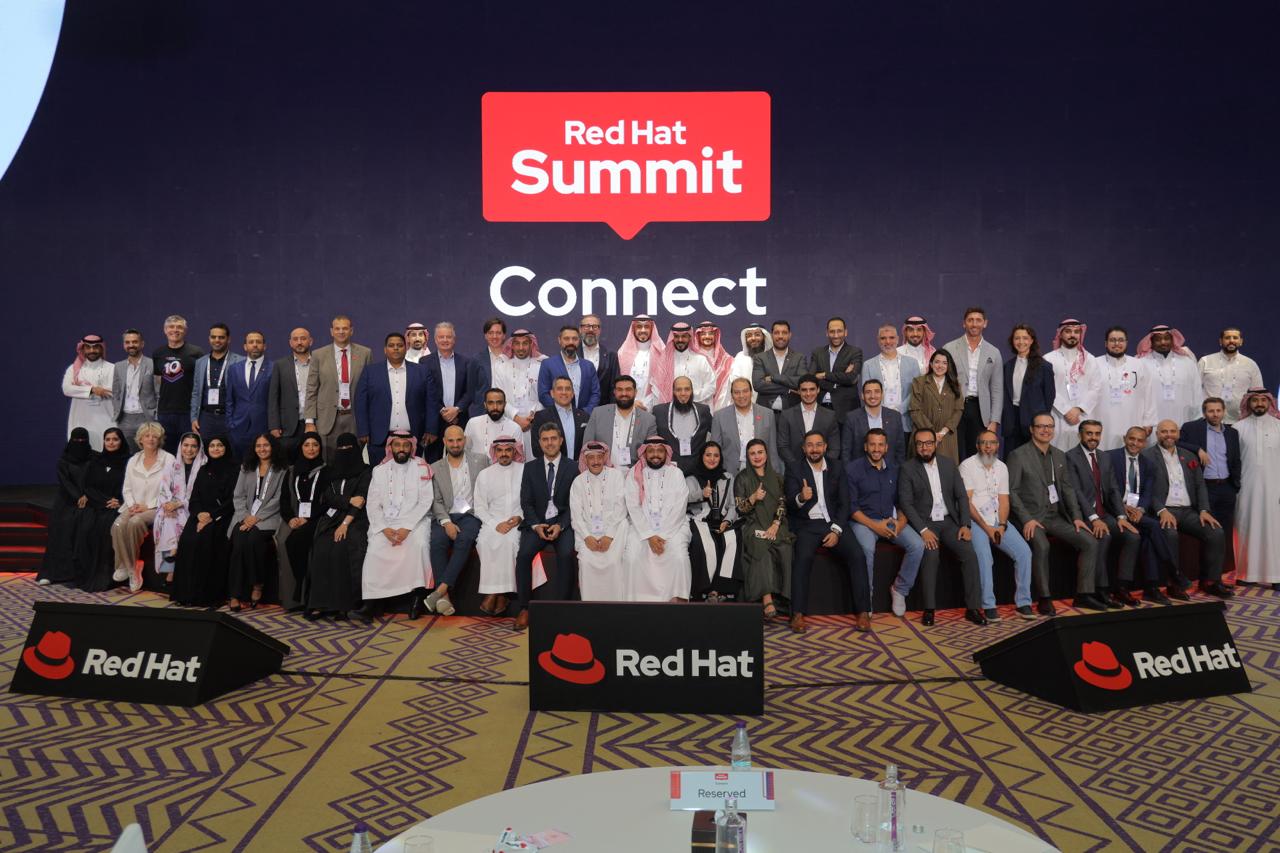
Building the Future of Open Innovation: Red Hat’s Strategy for Growth and Digital Transformation in Saudi Arabia and Beyond
Red Hat, the world’s leading provider of open-source solutions, hosted the Red Hat Summit: Connect Riyadh 2025, an event that brought together Red Hat’s senior global and regional executives, partners, technology leaders, and customers to explore how open-source innovation is driving the next wave of enterprise transformation across Saudi Arabia and the broader EMEA region.
A key engagement for Red Hat, the summit served as a strategic platform to discuss the transition from the cloud era to the AI era, highlighting the importance of modernizing core infrastructure to meet the rapid shift to AI-driven operations. Red Hat leaders discussed how the Open Hybrid Cloud empowers businesses to scale and innovate with a consistent, secure, and automated foundation for all applications and workloads. The summit underscored Red Hat’s continued commitment to supporting Saudi Arabia’s Vision 2030 and the region’s broader digital transformation goals, empowering enterprises to achieve digital sovereignty through open, flexible, and trusted technologies.
Speaking on the sidelines of the event, Ed Hoppitt, EMEA Director of Value Strategy for App and Cloud Platforms at Red Hat, said in an exclusive interview.
How does Red Hat’s expansion strategy align with the company’s growth goals in Saudi Arabia and the wider MENA region?
Red Hat’s expansion strategy is closely aligned with its long-term objectives of enhancing its presence in Saudi Arabia and the broader MENA region. In the coming years, we aim to deepen our local presence by strengthening partnerships, investing in talent development, and enhancing collaboration with both government and enterprise customers to accelerate digital transformation in line with Saudi Vision 2030.
Our focus is on enabling organizations to build AI-ready, hybrid cloud environments that are secure, scalable, and compliant with local data sovereignty standards. To achieve this, we are expanding our network of local partners and system integrators to bring Red Hat’s open-source technologies closer to customers. In parallel, we continue to support certification and skills-building initiatives to empower the Kingdom’s emerging IT workforce with the requisite knowledge and resources to innovate and lead in an open-source ecosystem.
As the region advances toward a diversified, knowledge-driven, and digitally sovereign economy, Red Hat remains committed to being a trusted, long-term technology partner supporting this transformation.
How is Red Hat helping enterprises achieve greater efficiency and modernization through technologies like automation and virtualization?
We help enterprises achieve greater efficiency and modernization by streamlining how they deploy, automate, and manage IT across hybrid and multi-cloud environments. Our goal is to make operations faster, smarter, and more adaptive to evolving business needs.
With the latest innovations, such as image mode in RHEL 10 and the RHEL Lightspeed AI assistant, which simplifies deployments and guides users through complex tasks, organizations can streamline deployments, automate complex tasks, and enhance productivity. The Ansible Automation Platform, now integrated with Terraform and powered by Lightspeed, enables automation at scale, thereby reducing manual effort, improving consistency, and accelerating delivery across diverse environments.
Through Managed OpenShift, available on all major cloud providers, enterprises can simplify operations and scale seamlessly by leveraging OpenShift Lightspeed. For modernization, our proven four-phase virtualization strategy, validated by large-scale success stories such as Emirates NBD’s migration of over 9,000 VMs, helps organizations evolve their infrastructure with minimal disruption. Furthermore, technologies like Event-Driven Ansible introduce policy enforcement as code, ensuring standardized, compliant, and secure IT operations. Meanwhile, the Red Hat Advanced Developer Suite enhances productivity by reducing complexity and speeding up deployments.
Together, these innovations empower enterprises to modernize their cloud infrastructure, enhance operational efficiency, and unlock new resources for AI-driven innovation in the future, all while maintaining flexibility, resilience, and control.

Ed Hoppitt, EMEA Director of Value Strategy for App and Cloud Platforms at Red Hat








